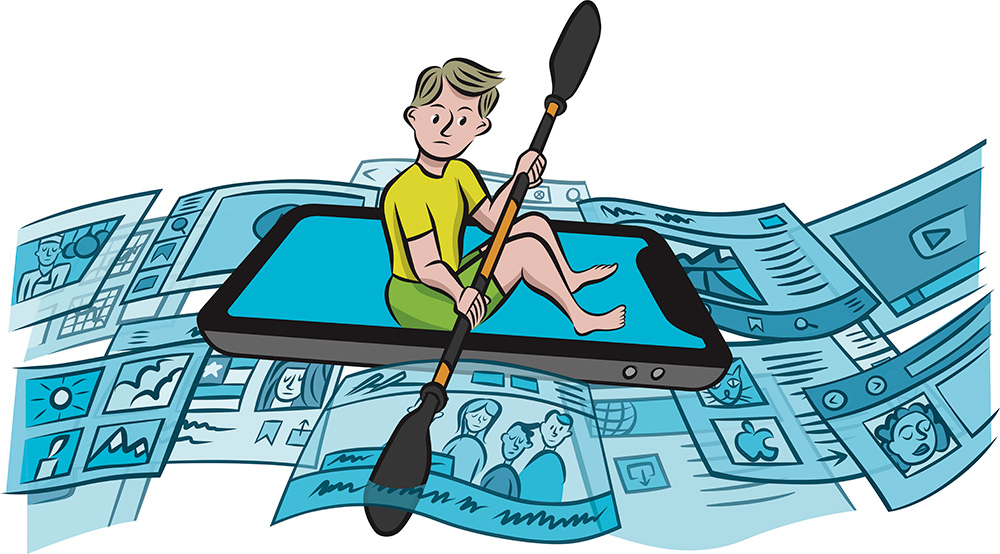[Editor’s note: This article is part of a Tyee partnership with Victoria-based Hakai Magazine, which will be publishing stories about COVID-19 in these pages during the pandemic.]
I felt honoured last week when my brother-in-law emailed me from Los Angeles, California asking for help.
“As a man of science who frequents social media, I thought I’d get your opinion on whether this will burn me if I post on social media,” he wrote.
I was flattered. With a background in biology and science communication, I’m often a “nerd of trust” in my social sphere. Official duties include identifying backyard insects, chatting about narwhal biology, or guessing what a gelatinous blob on the beach once was — all topics that are less front of mind these days. The world has changed.
Life a week ago seems almost unrecognizable now. My brother-in-law, a retail executive, was seeking my advice on posting an analytic rant on the COVID-19 pandemic and how we, as a society, could continue living our lives in these extraordinary times. As a father of two kids under the age of two, he’s got an emergent social network of other new parents, and he wanted to assure them that the sky would not fall. He took solace in our ability to handle the influenza virus each year.
I was, however, wary of his desire to engage on social media. The first words out of my mouth were: “Have you met social media? You’ll get burned either way.” Yet, I also wanted to be supportive.
So, what did I do?
First, I’m going to let you in on a little secret: nerds of trust rarely know the answer to questions off the top of their head. What they know is where to look for trusted sources — how to weave through the gauntlet of misinformation that permeates the online ecosystem. Then comes the critical step: what do you do once you find that information?
As a reformed know-it-all, I know what not to do, which is to answer a question with data alone. Fixing an information gap solely by feeding a person more and more information is like forcing cod liver oil on someone who asked for a slice of cake.
Social scientists have known since the 1980s that more information does not equate to more understanding. It’s called the deficit model — the fallacy that a knowledge gap can be filled with information. People develop their beliefs through their life experiences. If you ignore culture, personal background, religion and political leanings, then you’ll likely be disappointed by someone’s reaction when you respond with the facts.
To make matters even more challenging, communicating science is that much harder in times when public concerns about risk are high. For example, even though the scientific evidence is solid, explaining why water fluoridation and vaccines are good ideas can be difficult. At one point, each of these issues came under intense scrutiny by governments, scientists and the public, leaving behind a tinge of doubt in the minds of some people.
Peter Sandman, a risk communication researcher, has made some fascinating observations about how we handle information in times of crisis. The traditional calculation of risk is to multiply the magnitude — how bad something will be when it happens by the probability of it happening (risk = probability x impact).
It’s the type of formula that an environmental assessor uses to determine acceptable outcomes from a proposed industrial project or a simplified way that an insurance company uses to calculate rates.
But Sandman says that this classic equation needs another key factor: outrage.
Outrage is a strong emotion. The actual magnitude or probability of risk is overcome by the cultural assessment of risk. Emotions and beliefs outweigh data. For most of the public, the risk formula can be better expressed as:
risk = 😳 x 💥
So if forcing data is a bad strategy, what is a good strategy? Your best path to get someone to listen to you is to have frank, open discussions, and for you to listen to their concerns about an issue. In this case, the COVID-19 pandemic.
Instead of giving someone an info dump (or some such), talk about the worry of being alarmist. Talk about the disruption in your life. Talk about the dilemmas. You normally help your grandma with meals, but now you can’t visit. You’re worried that the project you’ve been working on for months might get cancelled if you don’t go in to work. You’re sad because you can’t celebrate a milestone with friends and family.
Get to the core of their concern and you’ll likely find some common ground. Acknowledge anxiety and self-doubt. Listen. Reflect. Empathize.
While my brother-in-law is receptive to data — coming from me, his nerd of trust — if he were to open the spigot of data and shower it on social media, few would be receptive.

After my initial warning to my brother-in-law about potentially knee-jerk nasty reactions from his burgeoning social network, I leaned into my newfound wisdom. I didn’t discuss any numbers he had in his post, or his assessment of the risk of the virus to the public at large. I asked him why he wanted to send the post — to calm people down — and whether he thought his text would accomplish that. Yesterday, I asked him over the phone if he had posted his rant on social media.
“Nope. And I’m really glad I didn’t. I would’ve gotten destroyed,” he said. “But I’m keeping the text as a message to my future self. I still think it was mostly good advice.”
Yes, explaining science to non-scientists is necessary, and nerds of trust and science journalists should continue to do so. Creative visualizations and in-depth reporting are invaluable when it comes to public education.
But, it’s up to you to share those articles when a person asks, not when you think they need to know. Feeding them more information in a time of crisis is not the answer and it can backfire. Empathy and listening breed trust. Trust leads to better decision-making. ![]()
Read more: Coronavirus, Science + Tech
















Tyee Commenting Guidelines
Comments that violate guidelines risk being deleted, and violations may result in a temporary or permanent user ban. Maintain the spirit of good conversation to stay in the discussion.
*Please note The Tyee is not a forum for spreading misinformation about COVID-19, denying its existence or minimizing its risk to public health.
Do:
Do not: